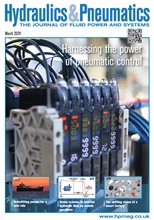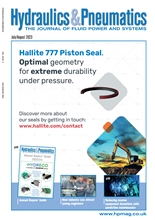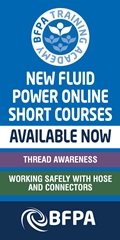Flywheel couplings offer compact options for construction machinery

Today’s construction machinery has to offer robust and reliable operation in some of the most challenging application environments; therefore, the mechanical components used in their design must also offer the highest levels of performance and reliability. Andy Bargh, business development manager for GP Couplings at Altra Industrial Motion Corp., examines some of the design considerations for flywheel couplings in different machinery applications.
The building and infrastructure requirements of the developed world are seemingly ever growing, while developing countries are increasingly investing in mechanised alternatives to manual labour. As a result, the demand for construction machinery that can complete large-scale projects in a timely, cost-effective manner and with consistent quality is accelerating, driving the market forwards.
Global forecasts paint a picture of a market that is not just growing, but where the rate of growth in increasing. CAGR estimates from just a few years ago of 7% to 2021 have been revised upwards to almost 8% to 2023, driven by accelerating demand from the likes of the irrigation industry and increasing numbers of highway construction projects.
The selection criteria for construction machinery highlight the need for equipment that is as standard as possible, and which gives the best possible service at the lowest cost – and frequently in the smallest possible size. This places stringent demands on construction machinery manufacturers to develop products that improve performance and reliability, simplify servicing requirements, and which can be manufactured with reduced production costs.
This in turn makes the selection of the mechanical components used within the design paramount, and nowhere more so than in the couplings that connect the drive (diesel, petrol or electric) to the driven equipment, such as hydraulic systems, compressors, fans/blowers, generators and pumps. In many of these applications, particularly those involving diesel engines, a flywheel coupling will most often be selected to connect the driver to the driven equipment. But with so many different types of diesel-driven construction machines, each with their own performance requirements, selection of the appropriate flywheel coupling is a far from trivial exercise.
Hydraulic driven equipment
Where the diesel engine is to be coupled with hydraulic driven equipment, a prime consideration is how the overall equipment profile can be condensed, and how the OEMs can meet today’s increased volume demands at the lowest production costs.
Thus while the flywheel coupling’s speed, torque and power specifications have to meet the performance requirements of the particular machine, just as important is the size of the product and its ease of installation – ensuring the OEMs can minimise the equipment profile and reap the benefits of simple installation, with repeatable quality, all helping to drive down manufacturing cost.
Since most hydraulic applications are smooth running and direct mounted, either with a pump-to-motor adapter or with a pump plate, torsional vibrations and misalignment tend to be lesser issues than in other construction machinery applications. The flywheel couplings can be torsionally stiff, enabling the speed ranges to be extended above the standard operating speed range of the application.
-
Smart Manufacturing & Engineering Week
05 - 06 June, 2024
NEC, Birmingham -
HILLHEAD 2024
25 June, 2024, 9:00 - 27 June, 2024, 16:00
Hillhead Quarry, Buxton, Derbyshire UK










